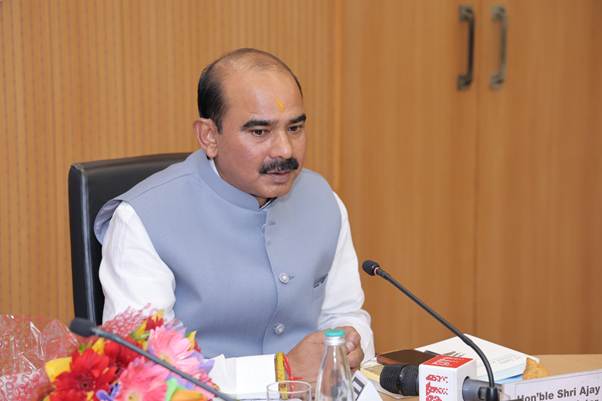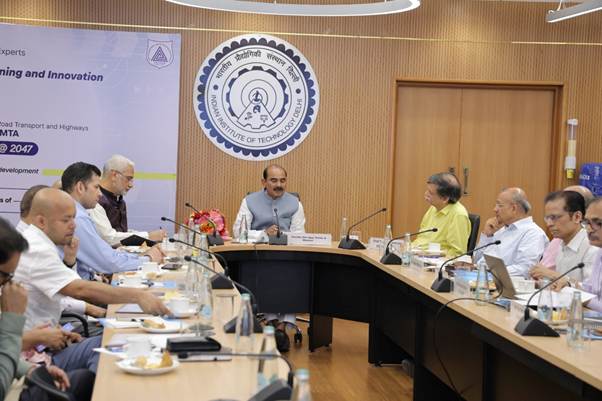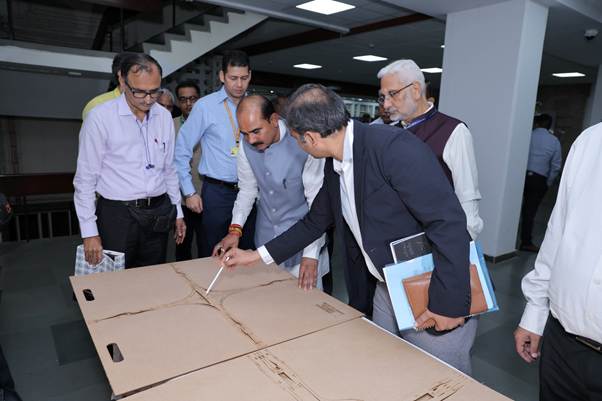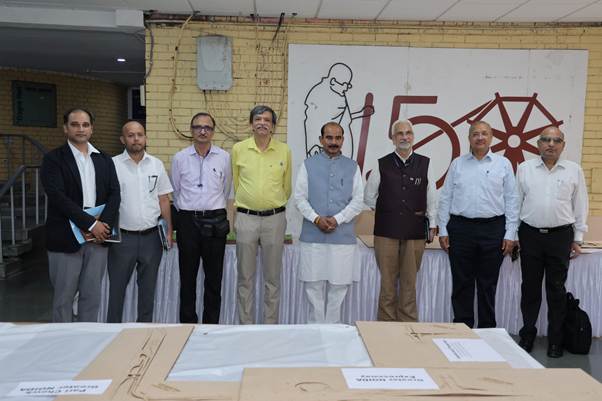From Roads to Corridors of Innovation: Building India’s Infrastructure Future Is Not Just a Goal, It’s a Responsibility – Shri Ajay Tamta
From Roads to Corridors of Innovation: Building India’s Infrastructure Future Is Not Just a Goal, It’s a Responsibility – Shri Ajay Tamta
Shri Ajay Tamta, Hon’ble Minister of State for Road Transport and Highways, held a landmark dialogue with experts from IIT Delhi, School of Planning and Architecture (SPA), Delhi, and industry partners, emphasising that the future of India’s infrastructure lies in innovation-led, safety-integrated, and context-sensitive road planning. The event showcased not only road safety solutions but also pioneering technologies, advanced planning frameworks, and low-cost, high-impact designs that can transform the way roads are conceived and constructed in India.
Shri Tamta highlighted that under the vision of Hon’ble Prime Minister Shri Narendra Modi ji’s Viksit Bharat 2047, infrastructure will play a defining role in making India a developed nation. “The Ministry is not just building roads, but shaping corridors that serve as engines of industrial growth, urban expansion, digital connectivity, and citizen well-being,” he remarked.
He called for a paradigm shift from reactive construction to proactive, innovation-led planning, where road projects are no longer isolated engineering exercises, but integrated, multi-sectoral development tools.
During his visit, Shri Tamta interacted with faculty and innovators from IIT Delhi, SPA Delhi, and the Minister stressed that these innovations not only improve safety, but also tackle chronic issues in road projects such as land acquisition challenges, urban traffic congestion, poor last-mile connectivity, and cost overruns.
The Minister emphasised the need to indigenise design models, rather than replicating from the West. India’s unique geography, climate, behavioural patterns, and population density demand customised solutions, including integrated safety zones, mobility hubs, and mixed-use road corridors.
He also reviewed multi-directional free traffic models, hotspot-based safety designs, and door-to-door mobility systems for low-cost, high-efficiency public transit using a no-app-no-URL ( PiFi – Private Internet Fidelity) based transport system suitable for rapid urban transportation.
Shri Tamta advocated for a governance model where physical plans are invited and evaluated transparently before DPR formulation, allowing a clear pathway to implementation. He reiterated that innovation must be the cornerstone of MoRTH’s future planning strategy and highlighted the role of Centres of Excellence (CoEs) as incubators for such cross-disciplinary ideas.
He applauded IIT Delhi and SPA Delhi for leading this movement and called upon other academic and industry institutions to join in this mission of nation-building through intelligent infrastructure.



